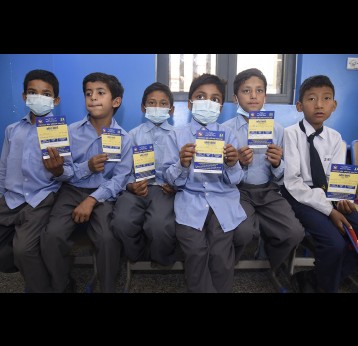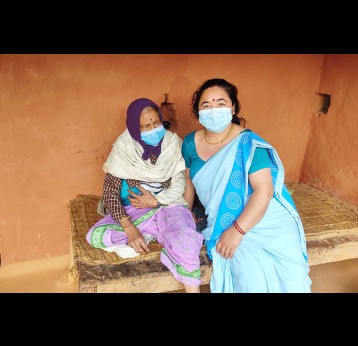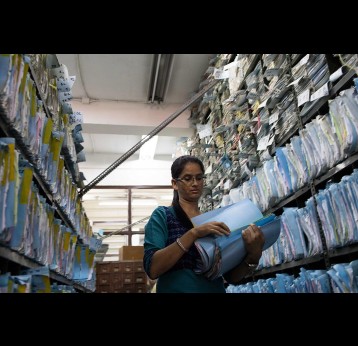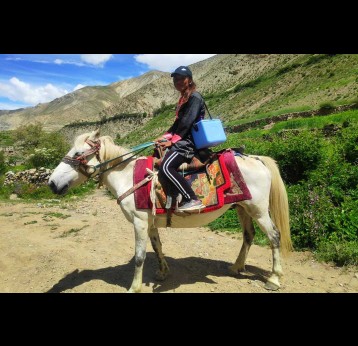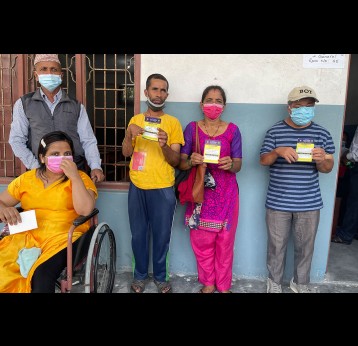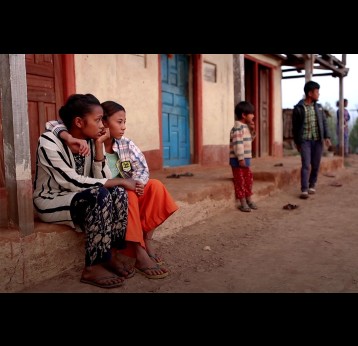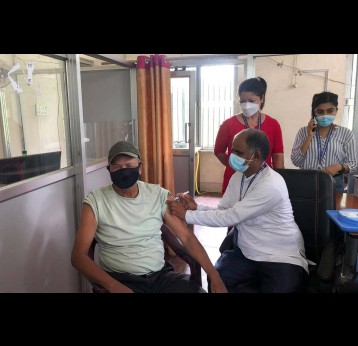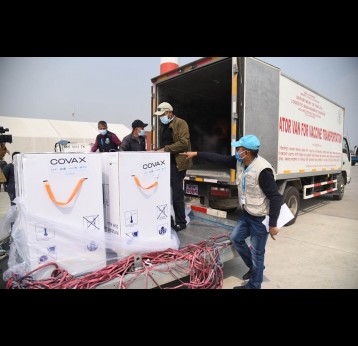Country Information
DTP3 / immunisation coverage
Grade of ConfidenceCommitments: Multi-year programme budgets endorsed in principle by the Gavi Board. These become financial commitments upon approval each year for the following calendar year.
Approvals: Total Approved for funding
Disclaimer: the boundaries and names shown and the designations used on this map do not imply the expression of any opinion whatsoever on the part of Gavi, the Vaccine Alliance concerning the legal status of any country, territory, city or area or of its authorities, or concerning the delimitation of its frontiers or boundaries. Dotted lines on maps represent approximate border lines for which there may not yet be full agreement.
This Gavi country data is made available under the Creative Commons BY 4.0 license: https://creativecommons.org/licenses/by/4.0/
Latest News
All News7 April 2022
Nepal introduces Typhoid vaccine into routine immunisation across the country
The Ministry of Health and Population, Gavi, the Vaccine Alliance, UNICEF, WHO and other partners are collaborating on the nationwide typhoid vaccine introduction including a catch-up campaign, which seeks to vaccinate all children from the age…
10 March 2022
Carrying the hopes of a nation on her back: Nepalese health worker goes above and beyond
Health worker Lila Thapa walked 30 minutes over hilly terrain with an elderly community member on her back, ensuring she received her COVID-19 vaccine.
8 March 2022
Walk-in coolers provided by the COVAX Facility are helping to strengthen vaccine storage facilities around Nepal – crucial as the country seeks to accelerate its ongoing COVID-19 drive.
17 February 2022
Vaccine mandate drastically increases vaccination rate in Nepal
To boost uptake, the Nepalese government has made vaccination cards mandatory for access to public services: it’s working.
7 February 2022
Travelling by horseback through the Himalayas: Getting vaccines to the people in Nepal
The Himalayan villages of Nepal are some of the most inaccessible places on earth. Nevertheless, health workers are putting their lives on the line to make sure they aren’t left behind in the fight against COVID-19.
22 November 2021
COVID-19 vaccines: Nepal leaves no people with disability behind
"Leave no one behind" has been one of the core pledges of the SDG 2030 agenda. In light of the COVID-19 situation, it is vital to consider the plight faced by people with disability. Nepal has lessons for us all.
9 November 2021
Sickness and survival in pre-COVID-19 Nepal
A gripping documentary about a family's struggle with the emotional and financial consequences of severe pneumonia.
17 September 2021
Vaccine justice: Nepal gives refugees priority in the vaccine queue
Nepal has distributed more than 10 million doses of COVID-19 vaccine according to a considered allocation schedule based on humane, inclusive, epidemiological good sense. The country’s future safety depends on the willingness of the rest of the…
Subscribe to our newsletter
Sources
| Name | Source | Date |
|---|---|---|
| Total population by country, by year, by age | United Nations, United Nations, Department of Economic and Social Affairs, Population Division. World Population Prospects. | 2019-07-31 |
| Total number of children surviving until 1 year old by country and by year | United Nations, United Nations, Department of Economic and Social Affairs, Population Division. World Population Prospects. | 2019-07-31 |
| UN Life births per gender | United Nations, United Nations, Department of Economic and Social Affairs, Population Division. World Population Prospects. | 2019-07-31 |
| Under-five mortality rate by country and by year | UNICEF CME Info http://www.childmortality.org/, Level & Trends in Child Mortality. Estimates Developed by the UN Inter-agency Group for Child Mortality Estimation (UNICEF, WHO, World Bank, UN DESA, UNPD). | 2020-09-01 |
| Infant mortality rate by country and by year | United Nations, United Nations, Department of Economic and Social Affairs, Population Division. World Population Prospects. | 2020-09-01 |
| GNI per capita, Atlas method (current US$) | World Bank, The gross national income, converted to U.S. dollars using the World Bank Atlas method, divided by the midyear population | 2021-07-01 |
| Antigen Coverage (%) by country and by year | WHO/UNICEF, Coverage refers to the number of administered doses divided by the number of eligible children to receive that vaccine. | 2021-07-15 |
| Percentage of districts with >=80% DTP3 coverage | WHO, Joint Reporting Form (JRF) | 2021-07-15 |
| Percentage of districts with <50% DTP3 coverage | WHO, Joint Reporting Form (JRF) | 2021-07-15 |
| Total Disbursed - Finance Disbursement | GAVI, Access software for Finance (in USD) | 2019-09-17 |
Grade of Confidence (GoC): The WHO and UNICEF estimates of national immunisation coverage (wuenic) are based on data and information that are of varying, and, in some instances, unknown quality. Beginning with the 2011 revision WHO/UNICEF describe their grade of confidence (GoC) in these estimates. As there is no underlying probability model upon which the estimates are based, WHO/UNICEF are unable to present classical measures of uncertainty, e.g., confidence intervals. Moreover, WHO/UNICEF have chosen not to make subjective estimates of plausibility/certainty ranges around the coverage. The GoC reflects the degree of empirical support upon which the estimates are based. It is not a judgment of the quality of data reported by national authorities.
|
Explanation of GoC values: |
|
| *** |
Estimate is supported by reported data [R+], coverage recalculated with an independent denominator from the World Population Prospects from the UN Population Division (D+), and at least one supporting survey within 2 years [S+]. While well supported, the estimate still carries a risk of being wrong. |
| ** | Estimate is supported by at least one data source; [R+], [S+], or [D+]; and no data source, [R-], [D-], or [S-], challenges the estimate. |
| * | There are no directly supporting data; or data from at least one source; [R-], [D-], [S-]; challenge the estimate. |


